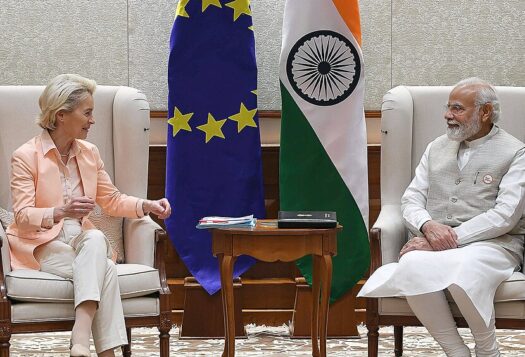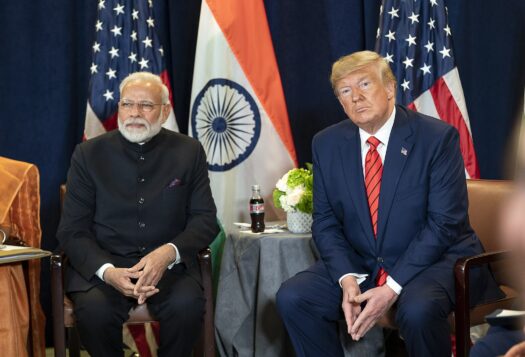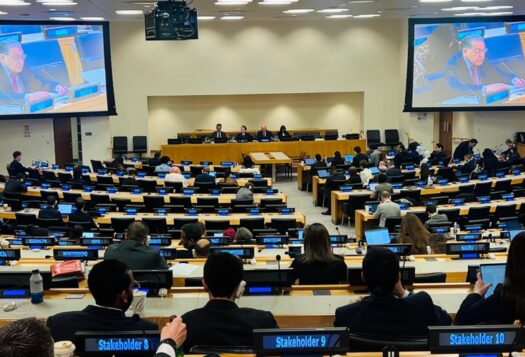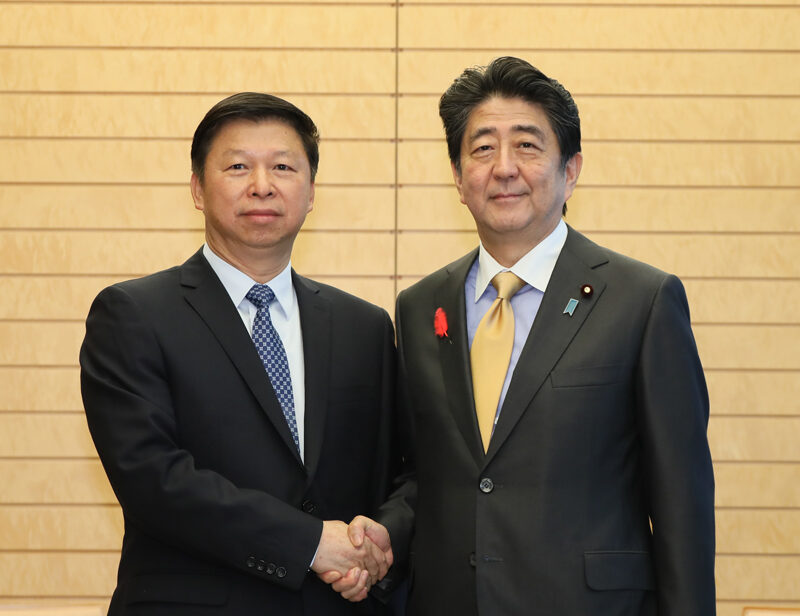
On April 26, 2023, Bangladeshi Prime Minister Sheikh Hasina and her Japanese counterpart Fumio Kishida signed a joint statement on a ‘strategic partnership’ in Tokyo, elevating Japanese-Bangladeshi ties to a new level. Less than two weeks later, Chinese Ambassador to Bangladesh Yao Wen commented that Bangladesh and China should deepen their ‘strategic partnership.’ On August 23, during a meeting with Bangladeshi Prime Minister Hasina on the sidelines of the BRICS Summit at Johannesburg, Chinese President Xi Jinping promised that China would work to bring the Sino-Bangladeshi strategic partnership to a new level. Three days later, Japan announced its decision to include Bangladesh in its “Official Security Assistance” (OSA) framework to enhance defence cooperation, a program that breaks with Japan’s long-standing avoidance of using of development aid for military purposes other than disaster relief. The fact that these announcements coincided so closely, despite never referencing each other, points toward the presence of a relatively less well-known dynamic in Bangladesh’s geopolitics: the discreet Sino–Japanese competition in Bangladesh.
While the Sino-Indian competition in Bangladesh is more well-known and is often mentioned in Chinese, Indian, Bangladeshi and other foreign publications, the rise of Sino–Japanese competition through aid and investment is not sufficiently examined in policy debates. Both countries provide Bangladesh with different types of aid and investment opportunities, which presents policymakers with potential opportunities as well as challenges. Ideally, Bangladesh will be able to continue to benefit from both sources of investment. However, recent developments, such as the early-2023 decision to pass over China and instead award Japan with the contract to build the Matabari deep-sea port, suggests that rising geopolitical competition may not permit such a simple future. Thus, the public ought to be fully informed of the discrete Sino-Japanese competition in Bangladesh in order to drive informed debate over how to navigate competing investments in a careful and pragmatic manner.
The public ought to be fully informed of the discrete Sino-Japanese competition in Bangladesh in order to drive informed debate over how to navigate competing investments in a careful and pragmatic manner.
Background of Sino–Japanese Competition in Bangladesh
Since the independence of Bangladesh in 1971, both Japan and China have been important partners for Bangladesh and have competed for influence. During the Cold War, the Sino–Japanese competition in Bangladesh was minor in scope. However, since the end of the Cold War, the two countries have been engaged in an intensifying competition for geopolitical influence in Bangladesh. Bangladesh is a key participant in China’s Belt and Road Initiative (BRI) as a part of a crucial economic corridor. Japan’s ‘Free and Open-Indo Pacific’ (FOIP) geopolitical strategy, disclosed in 2016, has been described by academics as designed to counterbalance China’s strength and influence in the Indo-Pacific by providing the region with alternatives to BRI projects and cultivating maritime alliances with regional democracies.
Japan and China are incentivized to grow their ties with Bangladesh due to its key geographic position and the economic opportunities it offers amidst growing geopolitical competition across the Indo-Pacific. Bangladesh sits at the crossroads between South and Southeast Asia, nearly isolates Northeast India from the Indian mainland, provides access to maritime ports, and contains significant economic and resource potential. By inducting Bangladesh as an OSA recipient, Tokyo aims to “reinforce” the region’s “comprehensive defense architecture” and expand Japan’s network of security partners, with the implication that this is to counterbalance China’s regional connectivity.
Both China and Japan have cultivated the image of an ‘all-weather friend’ to Bangladesh. Beijing and Tokyo upgraded their relations with Dhaka to the status of strategic partnership in October 2016 and April 2023, respectively. The two countries have so far carefully avoided involving themselves in internal political conflicts in Bangladesh. Consequently, irrespective of the party in power, Bangladesh maintains close relations with both China and Japan. As a result, the Sino–Japanese competition in Bangladesh has largely left the internal politics in the country untouched, primarily manifesting itself on the economic and security fronts.
Sino–Japanese Competition in the Economic Sector
Immediately after Bangladesh’s independence, the volume of Bangladesh’s bilateral trade with Japan was greater than that with China. However, China has recently reversed this trend and rose to become Bangladesh’s largest trading partner in 2015. At present, Sino–Bangladeshi bilateral trade amounts to around USD $25 billion. Bangladesh imports industrial equipment, raw cotton, electronic goods, neat fabric, and other goods from China, making Bangladesh’s industrial and consumer sector largely dependent on Chinese products. On the other hand, Japanese–Bangladeshi bilateral trade currently stands at around USD $4.25 billion.
Meanwhile, Japan remains the largest aid donor to Bangladesh. Japanese overseas development assistance (ODA), a form of aid that provides grants and soft loans for developing countries that specifically target economic development and welfare, constitutes nearly 45% of the total bilateral aid received by Bangladesh and has amounted to approximately USD $27 billion since 1972. In 2022, Japanese commitment and disbursement of ODA to Bangladesh reached its second-highest level since 1974, constituting 17 percent of Bangladesh’s total foreign loans. In contrast, China provided approximately 8 percent of Bangladesh’s total foreign loans by 2022, a significant portion of which are non-concessional loans with high interest rates and short grace periods.
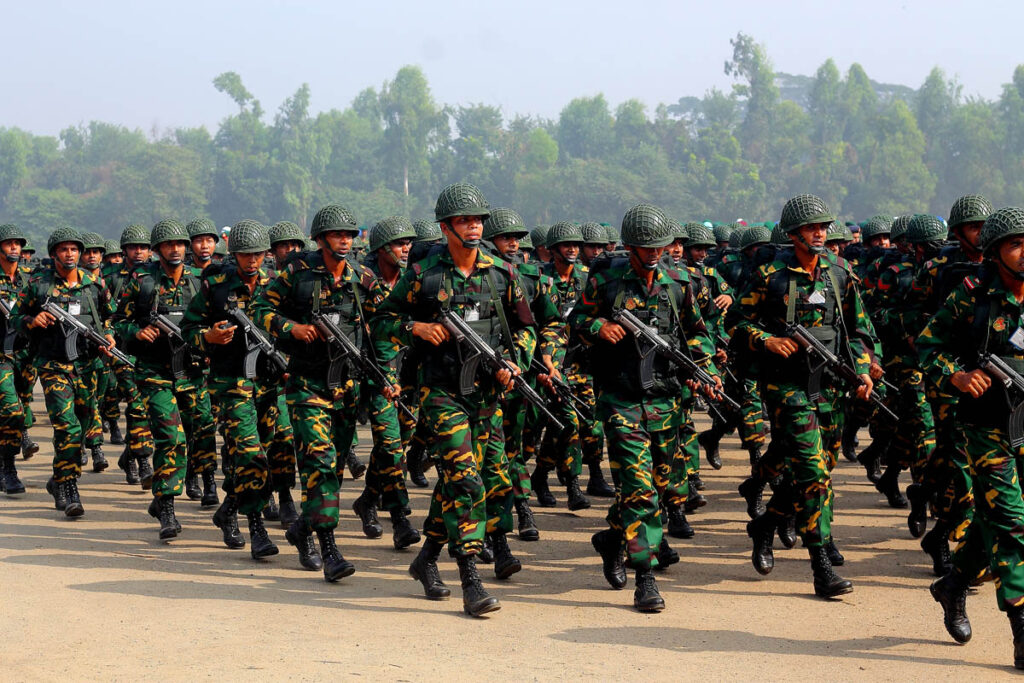
Bangladesh receives significant foreign direct investment (FDI) from both China and Japan, with China contributing the most investment toward infrastructure production. Foreign direct investment, in contrast to ODA, occurs when country or other investor acquires a substantial stake in a foreign business or purchases it outright to expand operations. China’s emphasis on bilaterally funded infrastructure projects has been framed by the Chinese government as coming with no “strings attached,” and while debated to in fact come with certain conditions, has been criticized for providing no incentive for good governance within institutions to further generate growth and development. According to the Chinese Ambassador to Bangladesh Yao Wen, China has invested USD $4.45 billion into 35 FDI projects as a part of China’s Belt and Road Initiative (BRI), and Chinese companies have received construction contracts worth about USD $23 billion. So far, China has constructed 21 bridges, 11 highways, seven railway lines, and 22 energy and power generation projects in Bangladesh and is financing approximately 90 percent of upcoming energy projects in Bangladesh. Moreover, China has acquired a 25 percent stake in the Dhaka Stock Exchange and purchased three Bangladeshi natural gas fields, which produce more than 50% of gas for local consumption. In brief, China is steadily integrating itself into the Bangladeshi economy.
Japanese foreign direct investment in Bangladesh reached USD $910 million by 2021 and more companies are allegedly seeking to invest in the country.Some 350 Japanese companies are active in Bangladesh, compared to China’s 670, which indicates a greater level of Chinese economic involvement in Bangladesh to date. Japan has previously financed the construction of 134 large and small bridges, and it is currently financing a number of infrastructure projects in Bangladesh, including the Dhaka Metro, the Chattogram City Outer Ring Road, the Karnaphuli Water Supply Project, and the Jamuna Railway Bridge.
While Japan has invested in Bangladesh’s infrastructure development for multiple years, increases in major project development indicate that Japan is stepping up its investment as a counterweight to an influx in Chinese investment. For instance, China demonstrated interest in developing a deep-sea port at Sonadia. In early 2023, Bangladesh instead awarded the contract to build a deep-sea port at Matarbari to Japan, a decision reportedly made under Japanese, U.S., and Indian pressure.
Sino–Japanese Competition in the Security Sector
Since 1975, China has been the most prominent supplier of military equipment to Bangladesh. China signed an agreement on defense cooperation with Bangladesh in December 2002, a relationship that has since become long-standing and robust. Between 2010 and 2019, China supplied 74 percent of Bangladesh’s imported military equipment. Bangladesh is also the second-largest customer of Chinese weapons. At present, the Bangladesh Armed Forces use Chinese-made tanks, air defense systems, radars, submarines, frigates, combat aircraft and other equipment. Moreover, China trains Bangladeshi military officers, has concluded intelligence-sharing agreements with Bangladesh, and has built the BNS Sheikh Hasina, the first-ever submarine base of the Bangladesh Navy.
Between 2010 and 2019, China supplied 74 percent of Bangladesh’s imported military equipment. Bangladesh is also the second-largest customer of Chinese weapons.
On the other hand, Japan has traditionally maintained limited security ties with Bangladesh, and the Japanese–Bangladeshi partnership has primarily focused on the economic and development-assistance front. Japan has traditionally kept its defense and security cooperation limited due to a general policy against providing offensive weapons, instead providing equipment to the Bangladesh Armed Forces, including forklifts, pickup trucks, staff cars and cranes.
Over recent years, Bangladesh has sought to diversify its sources of security assistance from traditional partners by importing weapons from Western states, Türkiye, and India. By building these relationships, Bangladesh is also reducing its dependence on Chinese military equipment. Concurrently, Bangladesh and Japan are seeking to expand their defense cooperation. Through the Official Security Assistance program, Japan would provide training and military equipment, including four patrol boats, to the Bangladesh Armed Forces. The decision to provide Bangladesh with military aid potentially signals a significant change in the countries’ security ties.
The Way Forward
In terms of sheer numbers, China has more economic and security influence over Bangladesh. Currently, China is an important trading partner to Bangladesh, the country’s largest foreign investment and infrastructure development partner, and largest supplier of military equipment. Meanwhile, Japan remains the largest source of ODA for Bangladesh. It appears that Japan seeks to counteract Chinese influence in Bangladesh by providing the country with more direct bilateral funding and development assistance, with a particular focus on infrastructure. Japan has also elevated the relationship to a strategic partnership, and enhanced defense cooperation with Bangladesh.
Consequently, it seems that the Sino–Japanese competition in Bangladesh is going to intensify in the near future, presenting Bangladesh with both advantages and disadvantages. Bangladesh has many infrastructural and economic needs, and both countries appear to be positioning themselves to pursue additional investment. On the one hand, Bangladesh can use its growing geopolitical importance to attract further investments from both powers to further its socio-economic development and to modernize its armed forces. On the other hand, facing a choice between China and Japan’s competing investments could result in increased political pressure on Dhaka to pick a side, risking the loss of one or either of these key sources of investment for Bangladesh’s development. For example, when reports emerged that Bangladesh was interested in joining the Quadrilateral Security Dialogue, or Quad, China’s ambassador to Bangladesh warned that the countries’ relationship would suffer “substantial damage” if Bangladesh were to join the U.S.-led alliance.
Since the phenomenon is largely absent from public discussions, it should receive more attention from Bangladeshi policymakers and academics, and they should particularly seek to discern the military-strategic implications of this discreet rivalry for the country. On a final note, Dhaka should adopt the utmost caution and pragmatism in navigating the Sino–Japanese competition in the country to preserve its mutually beneficial partnerships with both Beijing and Tokyo.
Also Read: China in South Asia: Bangladesh is Tilting towards China
***
Image 1: Former Prime Minister of Japan Shinzo Abe and Chinese politician and diplomat Song Tao via Wikimedia Commons
Image 2: 2011 Victory Day Parade, Bangladesh via Wikimedia Commons
